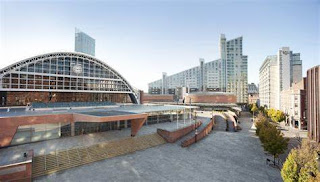Like many of the places we visited
on that trip, back here in Blackpool, the population struggles with the consequences
of much health inequality*. Indeed, last week our Secretary of State for Health
and Social Care, Wes Streeting, chose to visit Blackpool to make a speech about
how he intends to tackle these long-standing issues. It was good news for
Blackpool and other coastal areas around England.
The provision of health care in
many of these areas fails to meet the needs of the local population. This is
not a new issue. It is an example of what that famous Welsh GP, Julian Tudor
Hart described as the ‘inverse care law’. Back in 1971, he posited that
the availability of good health care tends to vary inversely with the needs of
the population served. Additionally, he argued that the concern of a population
for its own health tends to vary inversely with the actual state of health of
that population.
It is a powerful and not a difficult
proposition to understand. That said, I do like how Tudor Hart chose to explain
his thinking a few years later. He said ‘to the extent that health care
becomes a commodity, it becomes distributed just like champagne. That is, rich
people get lots of it. Poor people don’t get any of it’. An earlier Secretary
of State for Health, Frank Dobson, was even more pithy in describing this inverse
care law. He said ‘inequality in health is the worst inequality of all.
There is no more serious inequality than knowing that you will die sooner
because you’re badly off’. Frank died in 2019, aged 79.
When Wes came to Blackpool last
week, he spoke about it being a place he enjoyed visiting when he was younger.
However, sadly Blackpool was a place he now needed to visit to highlight health
inequalities across the nation. He announced an additional £2.2bn boost this
year to pay for more resources in both staff and equipment. Just to be clear,
dear reader, this is not all coming to us on the Fylde Coast!
This extra funding for coastal
and other areas of deprivation was described as a ‘down payment’ for
future funding. Now we know the mythical money tree, just like the Sycamore Gap
Tree, no longer exists, so where is this extra money coming from you might ask?
It's a clever political move (I
know I don’t do politics here, but bear with me). The £2.2bn is money that was
due to be distributed to the 215 NHS Trusts across England for what was
described as ‘deficit reduction’. All of the four NHS Trusts I have
worked in as a NED or Chair have run with deficits. This is not the blog to
explore why these deficits occur, but across the NHS, they have been a financial
blight for many NHS organisations. This money will no longer be available to cover
such deficits.
As Jim Mackey (the NHS England Chief
Executive) has told all NHS organisations, they must henceforth, balance their books.
Now, I’m really growing to like Wes and Jim’s approach. Along with Penny Dash
(NHS England Chair) they are the Harry, Hermione and Ron of our ‘NHS brave
new world’. But think on this. The Trust that I Chair has a deficit. We
were looking for some financial cover to address this. Without it, we are
likely to have to make additional cost savings. Inevitably, this will include changes
in how we provide services, and who we ask to provide those services in the future.
*Louise Gittins, the Chair
of the Local Government Association, said: “Health inequalities are estimated to cost the NHS an extra
£4.8bn a year, society around £31bn in lost productivity, and between £20bn and
£32bn a year in lost tax revenue and benefit payments. Health is therefore a
major determinant of economic performance and prosperity.”






